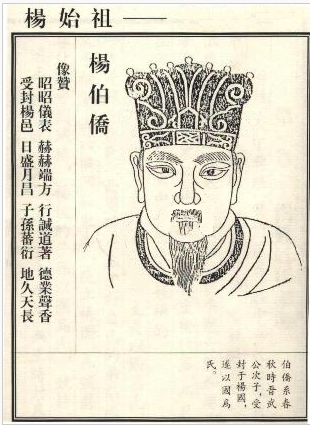
劉 / 刘 is a East Asian surname. pinyin: Liú in Mandarin Chinese, Lau4 in Cantonese. It is the family name of the Han dynasty emperors. The character 劉 originally meant 'kill', but is now used only as a surname. Today, it is the 4th most common surname in Mainland China as well as one of the most popular surnames in the world.

The Five Dynasties and Ten Kingdoms period, from 907 to 979 was an era of political upheaval and division in 10th-century Imperial China. Five states quickly succeeded one another in the Central Plain, and more than a dozen concurrent states were established elsewhere, mainly in South China. It was the last prolonged period of multiple political divisions in Chinese imperial history.

The Northern and Southern dynasties was a period in the history of China that lasted from 420 to 589, following the tumultuous era of the Sixteen Kingdoms and the Wu Hu states. It is sometimes considered as the latter part of a longer period known as the Six Dynasties. Though an age of civil war and political chaos, it was also a time of flourishing arts and culture, advancement in technology, and the spread of Mahayana Buddhism and Daoism. The period saw large-scale migration of Han Chinese to the lands south of the Yangtze. The period came to an end with the unification of all of China proper by Emperor Wen of the Sui dynasty.

The Xianbei were a Proto-Mongolic ancient nomadic people that once resided in the eastern Eurasian steppes in what is today Mongolia, Inner Mongolia, and Northeastern China. They originated from the Donghu people who splintered into the Wuhuan and Xianbei when they were defeated by the Xiongnu at the end of the 3rd century BC. The Xianbei were largely subordinate to larger nomadic powers and the Han dynasty until they gained prominence in 87 AD by killing the Xiongnu chanyu Youliu. However unlike the Xiongnu, the Xianbei political structure lacked the organization to pose a concerted challenge to the Chinese for most of their time as a nomadic people.
Guan may refer to any of at least four Chinese family names. The four names are as follows:

The nobility of China was an important feature of the traditional social structure of Ancient China and Imperial China.

Jin, originally known as Tang (唐), was a major state during the middle part of the Zhou dynasty, based near the centre of what was then China, on the lands attributed to the legendary Xia dynasty: the southern part of modern Shanxi. Although it grew in power during the Spring and Autumn period, its aristocratic structure saw it break apart when the duke lost power to his nobles. In 453 BC, Jin was split into three successor states: Han, Zhao and Wei. The Partition of Jin marks the end of the Spring and Autumn Period and the beginning of the Warring States period.

Emperor Wu of Jin, personal name Sima Yan, courtesy name Anshi (安世), was the grandson of Sima Yi, nephew of Sima Shi and son of Sima Zhao. He became the first emperor of the Jin dynasty after forcing Cao Huan, last emperor of the state of Cao Wei, to abdicate to him. He reigned from 266 to 290, and after conquering the state of Eastern Wu in 280, was the emperor of a reunified China. Emperor Wu was also known for his extravagance and sensuality, especially after the unification of China; legends boasted of his incredible potency among ten thousand concubines.

Qi, or Ch'i in Wade–Giles romanization, was a state of the Zhou dynasty-era in ancient China, variously reckoned as a march, duchy, and independent kingdom. Its capital was Yingqiu, located within present-day Linzi in Shandong.
Dynasties in Chinese history, or Chinese dynasties, were hereditary monarchical regimes that ruled over China during much of its history. From the inauguration of dynastic rule by Yu the Great in circa 2070 BC to the abdication of the Xuantong Emperor on 12 February 1912 in the wake of the Xinhai Revolution, China was ruled by a series of successive dynasties. Dynasties of China were not limited to those established by ethnic Han—the dominant Chinese ethnic group—and its predecessor, the Huaxia tribal confederation, but also included those founded by non-Han peoples.

Wu refers to a region in China centered on Lake Tai in Jiangnan. The Wu region was historically part of the ancient Yang Province in southeastern China. The name "Wu" came from the names of several historical kingdoms based in that area.

Yang is the transcription of a Chinese family name. It is the sixth most common surname in Mainland China. It is the 16th surname on the Hundred Family Surnames text.

Shu was an ancient state in what is now Sichuan Province. It was based on the Chengdu Plain, in the western Sichuan basin with some extension northeast to the upper Han River valley. To the east was the Ba tribal confederation. Further east down the Han and Yangtze rivers was the State of Chu. To the north over the Qinling Mountains was the State of Qin. To the west and south were tribal peoples of little military power.

Shu Yu of Tang, surname (姓): Ji (姬) given name (名): Yu (虞), and Ziyu (子於), was the founder of the State of Tang during the early Zhou Dynasty of ancient China. The State of Tang would later be renamed Jin by Shu Yu's son and successor, Xie. He was the son of King Wu of Zhou and Yi Jiang and the younger brother of King Cheng of Zhou.

Jī was the ancestral name of the Zhou dynasty which ruled China between the 11th and 3rd centuries BC. Thirty-nine members of the family ruled China during this period while many others ruled as local lords, lords who eventually gained great autonomy during the Spring and Autumn and Warring States periods. Ji is a relatively uncommon surname in modern China, largely because its bearers often adopted the names of their states and fiefs as new surnames.
Fàn is a Chinese family name. Is it also one of the most common surnames in Vietnam, where it is written Pham. It is the 46th name on the Hundred Family Surnames poem.

The conquest of Wu by Jin was a military campaign launched by the Jin dynasty (266–420) against the state of Eastern Wu in 280 at the end of the Three Kingdoms period (220–280) of China. The campaign concluded with the fall of Wu and the reunification of China under the Jin dynasty.
The following is a family tree of Chinese emperors (420–1279), from the Northern and Southern dynasties period, of first half of the fifth century AD, until the conquest of the Southern Song dynasty in 1279 by the Yuan dynasty.
Duke Wu of Jin, ancestral name Ji (姬), given name Cheng (稱) and also known as Duke Wu of Quwo, was the eighteenth ruler of the state of Jin. He was also the last ruler of the state of Quwo before he gained the title as the duke of Jin.
Yangzhou, Yangchow or Yang Province was one of the Nine Provinces of ancient China mentioned in historical texts such as the Tribute of Yu, Erya and Rites of Zhou.














